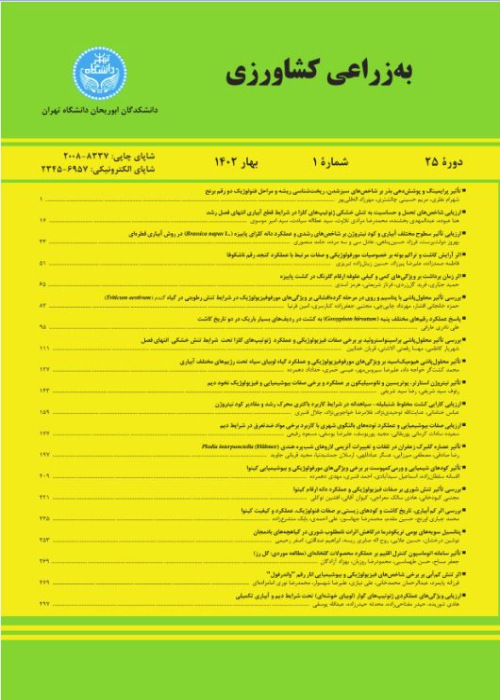The Effect of Seed Priming and Coating on Emergence Indices, Root Morphology and Phenological Stages of Two Rice Cultivars
In order to investigate the effect of seed priming (pretreatment) and coating on seedling characteristics, root morphology and phenological stages of rice, a two-year experiment has been conducted in the Rice Research Institute of Iran (Rasht) between 2020 and 2021. The experiment is performed as a factorial in a randomized complete block design with three replications. Experimental factors include two rice cultivars (Hashemi and Gohar) and the seed pretreatment of rice cultivars in seven levels, including (1) priming with calcium chloride (-1.25 MPa in 24 hours), (2) priming with potassium chloride (1.25 MPa in 24 hours), (3) priming with zinc sulfate (concentration of 0.5 mM in 12 hours), (4) hydro-priming (48 hours) + coating the seeds with calcium chloride, (5) hydro-priming (48 hours) + coating with potassium chloride, (6) hydro-priming (48 hours) + coating with zinc sulfate, and (7) hydro-priming (48 hours as control). The results show that the highest percentage and germination rate has been observed with 99.5% and 0.23 seeds per day under seed priming with potassium chloride in the Gohar cultivar, respectively. The lowest time required to achieve 90% emergence has belonged to Hasehmi and Gohar cultivars through priming with potassium chloride and calcium chloride. The highest root length (with 24.6 cm) has been observed in priming with potassium chloride in the Gohar cultivar. The highest root dry weight in Hashemi and the Gohar cultivars has been 2.14 and 4.9 g, respectively, in priming with potassium chloride. The results also show that the maximum root volume and area are obtained with 43 cm3 and 155.28 cm2 in priming with potassium chloride in Gohar cultivar, respectively. The least time required to achieve maximum tillering, 50% flowering, and physiological maturation takes place in priming treatment with calcium chloride and potassium chloride. Seed priming with potassium chloride and coating with calcium chloride have increased grain yield by 22% and 13%, respectively, compared to the control. The highest biological yield is observed in potassium chloride priming and coating with calcium chloride treatments with 5552 and 5414 kg. ha-1 in Gohar cultivar, respectively. In general, rice seed priming with calcium chloride and potassium chloride promoted plant yield by improving seedling characteristics, root system, and phenological stages.
- حق عضویت دریافتی صرف حمایت از نشریات عضو و نگهداری، تکمیل و توسعه مگیران میشود.
- پرداخت حق اشتراک و دانلود مقالات اجازه بازنشر آن در سایر رسانههای چاپی و دیجیتال را به کاربر نمیدهد.



